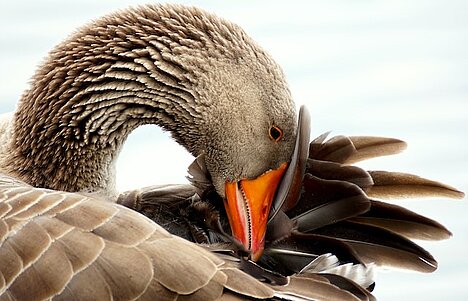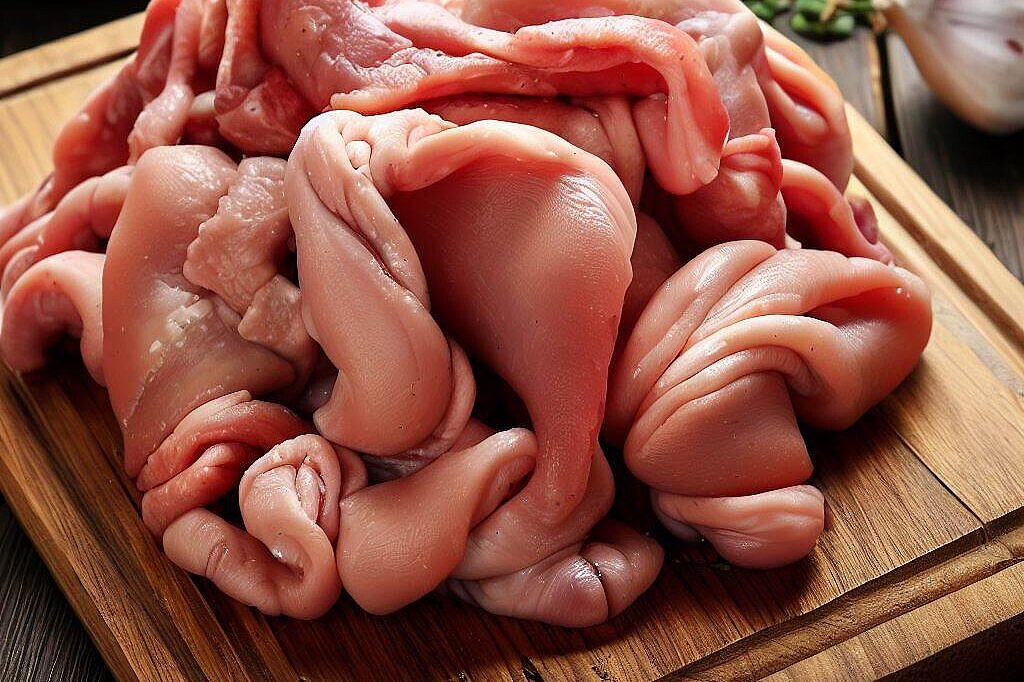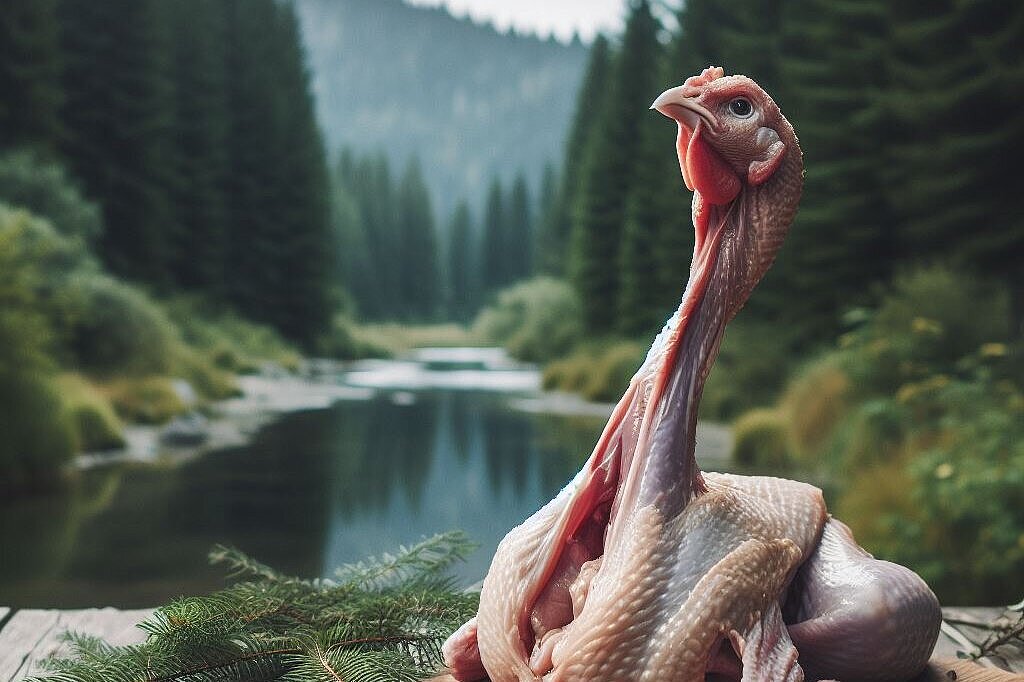Neck

What is neck?
The neck is a part of the carcass that consists of muscle meat, cartilage and bone. It can come from different animals, for example beef, lamb, turkey or chicken. Neck is rich in protein, calcium and phosphorus and therefore supports your dog's muscle development and bone health. Neck also cleans your dog's teeth and massages the gums when chewed.
What are the benefits of neck for dogs?
Neck has many benefits for dogs that eat it regularly. On the one hand, it is a natural and species-appropriate food source that corresponds to the prey principle. Secondly, it is a good alternative to other bones, which are often too hard or too sharp and can lead to injuries or blockages. Neck is softer and more elastic and can therefore be digested more easily. It is also generally cheaper than other types of meat and can therefore be easier on the food budget.
What are the disadvantages of neck meat for dogs?
Neck meat also has some disadvantages for dogs that need to be considered. For one thing, it can contain too much fat, which can lead to obesity or diarrhea. On the other hand, it can contain too much calcium, which can lead to an imbalance in the mineral balance. It can also cause allergies or intolerances if your dog is sensitive to certain types of meat. Therefore, you should always make sure that you only feed your dog fresh, high-quality wet meat and slowly accustom him to the new food.
How do I feed neck to dogs?
Neck can be fed raw or cooked. Raw neck meat is generally better tolerated and contains more nutrients than cooked meat. However, you should make sure that you only use fresh and hygienically clean meat and rinse it thoroughly before feeding. You should also always provide your dog with enough water and keep an eye on it while it is eating to prevent it from choking or choking.
Cooked neck meat is a good option for dogs that cannot tolerate raw meat or have a medical condition that requires cooked food. You can boil the neck in a large pot of water until it is tender. Then you can cut it into small pieces or mash it and mix it with rice or vegetables. Be careful not to add salt or spices and do not use the cooking water as it contains too much fat and calcium.
How much neck can my dog eat?
How much neck your dog is allowed to eat depends on various factors such as age, size, weight, activity level and health status. As a rule of thumb, your dog should eat around 2 to 3 percent of its body weight in meat every day. About a third of this should consist of bones. This means, for example, that a dog weighing 10 kilograms should eat around 200 to 300 grams of meat per day.
Neck is a cut of meat from the carcass of various animals and contains muscle meat, cartilage and bone. It is rich in protein, calcium and phosphorus and offers benefits such as supporting muscle development, bone health, teeth cleaning and gum massage when chewing. Neck is a natural food source, but attention should be paid to the fat and calcium content and possible allergies or intolerances. It can be fed raw or cooked, although raw neck meat is generally better tolerated and richer in nutrients. The amount depends on various factors such as the size, weight and activity of the dog. A guideline is about 2-3 percent of the dog's body weight per day, a third of which should be bone.
If you notice any signs of hypersensitivity or poisoning in your dog, you should see your vet immediately. We are not a substitute for a vet, but we try to be as accurate as possible. Every dog reacts differently and we recommend you get a second opinion or consult your vet if in doubt.
Stay healthy and take good care of your four-legged friend!😊
Similar to Neck
Duck necks are poultry parts consisting of the neck and head of the duck. They are usually offered dried or frozen and can be fed whole or cut into pieces. Duck necks contain a lot of meat,...
Goose necks are, as the name suggests, the necks of geese. They consist of muscle meat, cartilage, skin and bones. Goose necks are usually cut into pieces and offered frozen. They can be ordered in...
Poultry necks are the necks of chickens, turkeys or ducks that are produced as offal. They consist of meat, cartilage, skin and bones and contain many nutrients such as protein, fat, calcium,...
Chicken necks are a part of the poultry skeleton consisting of cartilage and meat. They are relatively soft and easy to chew, making them an ideal chew for dogs. Chicken necks are high in protein,...



